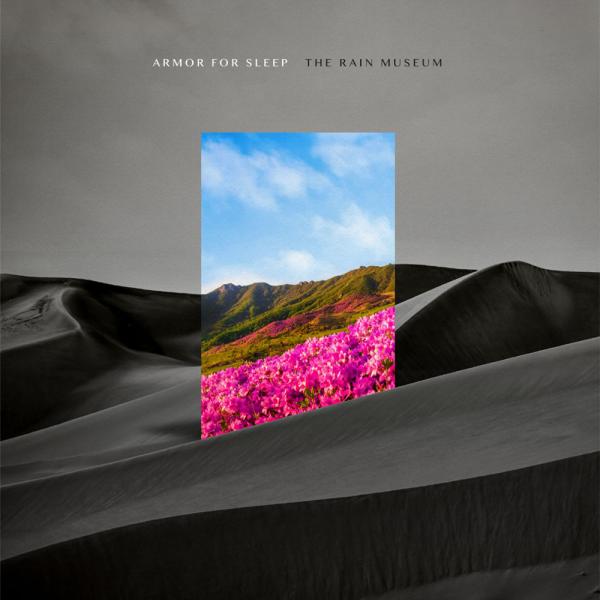
Connect with Armor for Sleep
Listen to Armor for Sleep
If you followed alternative rock and emo in the early to mid-2000’s, chances are good you came across Armor for Sleep. The New Jersey based band made a name for themselves with the spacey melodies and emotional singing of Dream to Make Believe and really blew up with 2005’s What to Do When You Are Dead. Their sound merged an equal amount of the stylistic elements you’d expect from the genre, but the strength of their guitar hooks and their concept album approach made a big difference. By 2007’s it looked like they were due to make an even bigger leap, signing to Sire Records and releasing Smile for Them, which took a song-to-song approach and offered more streamlined pop-oriented hooks. I found the album to be a bit uneven at the time of release, as though the band were unsure of just where to go next and considering they would disband two years later it seemed likethe label move and resulting music proved to be their undoing. But considering how many groups have been reuniting from the 90s and 2000s in recent years, it seemed possible that Armor for Sleep would someday return, and they’ve finally done that with The Rain Museum. Album number four finds them working with a cohesive concept again and returning to previous label home Equal Vision Records, which seems to have brought back that old spark while still pushing the band’s sound forward.
A fifteen-year absence is a long time for any group, and many that have returned after such a lengthy gap have either managed to capture their old sound in a meaningful way or done a complete 180 that left long-time fans conflicted. Armor for Sleep has gone for the latter, retaining the polished production values of Smile for Them while returning to the cohesive songwriting flow of What to Do When You Are Dead. Similar to Stabbing Westward’s return after two decades earlier in 2022, it often sounds as though Armor for Sleep never went away and just picked up where they left off while still adding elements that propel their writing forward. The Rain Museum has a very cinematic feel throughout many of its songs that tie well into the lyrical concept, and this is represented perfectly on the beginning and ending tracks. The title track kicks things off with an instrumental piece that builds slowly with piano before opening into an expansive melody that has a sense of beauty and sadness at the same time, and closer “Spinning Through Time” recaptures that tone with piano and keyboard works that fit thematically. In between these moments of sweeping melodic textures and subdued, somber atmosphere the album provides classic Armor for Sleep hooks. Songs have that familiar move from softer and brooding instrumentation into soaring choruses, and the likes of “World Burn Down”, “Whatever, Who Cares”, and “A Teardrop on the Surface of the Sun” have been stuck in my head for days. It helps that The Rain Museum is on the shorter side and comes across as a bit more streamlined, letting songs come in with strong hooks that don’t overstay their welcome before moving onto the next idea. Plus, the way that each track flows seamlessly into the next makes this an album easy to binge in its entirety while still offering choruses that will encourage listeners to hit repeat on specific ones.
Ben Jorgensen’s singing always felt a little bit rough to me on Dream to Make Believe, but over the next two albums he got considerably stronger and hit ranges that were filled with emotion yet still had enough power to draw you in. Considering the fifteen-year gap, it’s not surprising that the performance on The Rain Museum is the most polished yet and balances moments of fragility and sorrow with brighter, soaring ones. The concept for the album explores the idea of a post-apocalyptic Earth where there is no more weather and the titular rain museum gives a window into what life used to be like, which not only suits the somber yet hopeful tone of the instrumentals but weaves in the divorce Jorgensen was going through at the time into the narrative. It has the usual darker tone that listeners would expect from an Armor for Sleep album yet the way everything weaves together brings a bit more depth, and that makes the material stand out even more.
Armor for Sleep could’ve easily done some reunion shows to celebrate the anniversaries of their first two albums and then faded away again, but they’re returned with material that captures what made them so appealing originally while also naturally moving forward. There may be a few moments that feel very similar and do blend slightly over repeat listens, but the strength of the warmer melodies and soaring hooks combined with the cohesive way everything comes together makes this album stronger than I expected. It’s too early to say if this will stand as their best to date, but if you were a fan of the band in the past or are a fan of emo, alternative rock, or anything in between, this comeback is well worth your time.
-Review by Chris Dahlberg